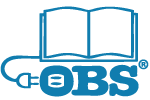Published in the IPNE Newsletter – June 2010
Back when BookExpo America (BEA) was the American Booksellers Association (ABA) Convention and Trade Exhibit, this was the biggest, most lavish book conference in the country, where the publishers introduced their fall lists to the bookstores. Filled with marketing hype, lavish parties by wholesalers and distributors like Ingram and B&T, private hospitality suites for the big publishers to celebrate headliners on their fall lists, the show travelled to a different city each year. It’s been at the Javits in New York City for some years now, which is a protean venue, shrinking or expanding to accommodate whatever size show comes its way. This year was a fairly small show in comparison to earlier years.
We went to hold a book signing for our author Anne Wyman and her new book, Kipling’s Cat, looking for software vendors and distributors for our clients, to sell rights to our titles, and to attend sessions to see where things are headed. We took a $400 table at the Rights Center to conduct this business. The Rights Center is a fine place to meet people privately, and a place to stash your booty from walking the floor, but there is little walk-through traffic, unlike on the show floor itself. You do not need to bring a staff to have a table at the Rights Center, or pay for an exhibit. If you do your homework ahead of time and schedule appointments every half hour, you can maximize the value of your time there and get a lot done, face to face, which I find the best way to work.
For me BEA is always a good way to touch in with existing clients and partners, see old friends, identify new business, and check out where the industry is headed in the various sessions. In these regards, it was a very successful show for us. The book signing was well organized and very well attended.
I dropped in on a session about the new agency model in publishing, chaired by Scott Lubeck of the Book Industry Study Group (BISG), which I found unsettling, in that it appears to be driven in large part by the Google Book initiative, representing a fundamental reversal in control of content valuation. With the agency model, value floats, with software vendors and conduits trimming their cuts off the top of every transaction, leaving the publisher, not to mention the author, in the back seat, in reactive mode, almost a minority partner in the transaction. The other session I attended was about new book apps, specifically for the iPad. One featured a talking children’s book, where a mother could read the book once, record right into the iPad, and then forever after the child could scroll those pages electronically, touching the screen, hearing mommy’s digitized voice. Felt kind of hollow walking out of that one.
The show has changed over the decades I’ve been attending. I found this year’s show had an unusually large number of remainder houses, and the biggest presence of self and sponsored publishing I’ve ever seen, right out front. The lines are blurring between what used to be called “gray publishing” and traditional publishing stovepipes like trade, academic, scholarly, professional. Software companies, suppliers and distributors held prominent booth space near doors and at the end of aisles; many larger publishers either didn’t attend, or had private curtained rooms at the side of the show floor. I hadn’t seen that hideaway routine at earlier shows.
Some university presses joined us up in the Rights Center, overlooking the Hudson River, many for the first time; several told me they expected to go back just one day next year, if at all. Up until this year, the show ran for four days, over Memorial Day weekend; this year we were there for one day of sessions and two show days, mid-week. I like this mid-week show better; seems more humane than having it on a holiday weekend.
During the ’80s I went to ABA shows looking for book packaging business, and in the ’90s, as an Internet publishing pioneer, planning to meet with clients and to look for software development, help publishers make the leap online. We brought the first Internet link to the ABA in Miami in 1992, in a collective stand we organized called “The Internet Start-up Booth” sponsored by O’Reilly, ATT, Sprint, the Internet Society, and MCI and PSI. Very few publishers had seen the Internet and we were the only booth with a dial-up connection and online publications. Our 10 x 10′ booth was overrun; the most frequently asked question was “What is the Internet?” I can remember staying up all night in our hotel, looking at all those business cards from CEOs, rehashing questions, so excited by what promised to be a great new sea change for the industry.
New media took off in the ’90s, in the form of CDs mostly, and at the Chicago show, in the mid 1990s, the show was so huge that we “new media” types were relegated to the North wing all to ourselves, and the small presses had a floor of their own, as I recall. In this year’s show, the show floor was all on one level and quite walkable; it doesn’t seem to make sense to have a new media section anymore, because almost everything is new media these days, as information and ideas, intellectual property, rather than books, becomes the stuff of publishing. I think this kind of show is enormously valuable to us as our industry grows and changes, giving us an opportunity to meet and talk and keep human hands holding on to those “e” books.
